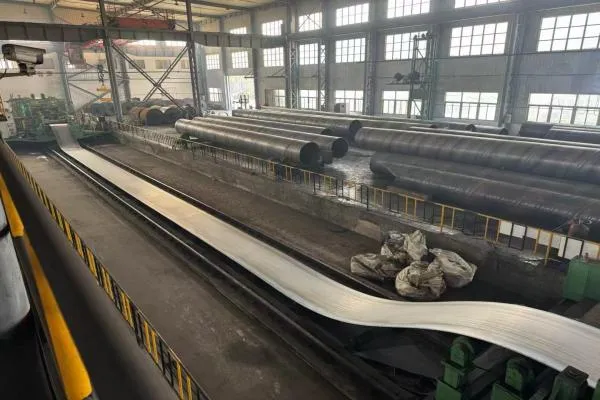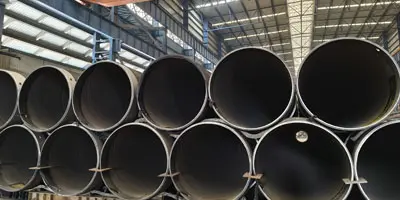Construction Methods of Piling Pipes
Piling pipes, also known as foundation piles, are critical components in deep foundation construction projects, ensuring the stability and safety of buildings, bridges, docks, and other infrastructure. They are used to transfer loads from the superstructure to deeper, more stable soil layers. Understanding the construction methods of piling pipes is essential for ensuring the effectiveness, efficiency, and environmental safety of these crucial structures.Piling pipes can be made of
SSAW steel pipes and
seamless steel pipes, as well as some large-diameter LSAW steel pipes and ERW pipes. In this article, we will explore the different construction methods of piling pipes, providing a detailed guide for both precast and cast-in-place piles.
Types of Piling Pipes
Before delving into the construction methods, it’s essential to understand the different types of piling pipes commonly used in construction projects:
1. Precast Piles
Precast piles are manufactured in factories or construction sites and include concrete precast piles, steel pipe piles, and H-shaped steel piles. These piles are driven, pressed, or vibrated into the soil to provide support for the structure above.
2. Cast-in-Place Piles
Cast-in-place piles are made by drilling a hole at the pile location, inserting a steel skeleton, and then pouring concrete into the hole. Depending on the method of forming the hole, cast-in-place piles can be divided into excavation piles, drilling piles, casing piles, and explosive expansion piles.
Construction Methods for Piling Pipes
1. Vertical pipe
Vertical pipe is a commonly used construction method for steel pipe piles. During the vertical pipe construction, the steel pipe needs to be embedded in the soil first, and then the steel pipe is gradually pushed down into the soil by jacking the steel pipe. During the construction of steel pipe piles, attention should be paid to controlling the descent speed and construction depth of the steel pipe to ensure the stability and safety of the steel pipe piles.
2. Casing method
Casing method is a commonly used construction method for steel pipe piles. In the casing method, a hole with a diameter slightly larger than the steel pipe is first drilled in the soil, and then the steel pipe is embedded in the hole, and cement slurry is poured around the steel pipe. The gap inside the steel pipe will be filled with self-flowing sand or cement slurry to form a fixed pile body. In the construction of the casing method, it is necessary to pay attention to controlling the depth of the casing and the diameter of the steel pipe to ensure the stability and bearing capacity of the pile body.
3. Digging method
Digging method is a more traditional construction method for steel pipe piles. In the hole digging method, a hole with a diameter slightly larger than the steel pipe is first dug in the soil, then the steel pipe is embedded in the hole, and finally cement slurry is poured around the steel pipe. The advantages of the hole digging method are simple construction and low cost, but its construction quality and stability are difficult to guarantee.
4. Pipe pulling method
The pipe pulling method is a relatively new method for steel pipe pile construction. In the pipe pulling method, a hole with a diameter slightly larger than the steel pipe is first drilled in the soil, then the steel pipe is embedded in the hole, and the steel pipe is gradually pulled out with compressed air. After the steel pipe is pulled out, cement slurry or other filling materials are poured into the hole to form a fixed pile body. The advantages of the pipe pulling method are fast construction speed and good construction quality, but it requires the use of special equipment and tools, and the construction cost is relatively high.

Several issues that should be noted during construction
The plane position deviation of the centerline of the pile hole should not exceed 50㎜, and the verticality deviation of the pile should not exceed 0.5%
The pile diameter should not be less than the design diameter of the pile. In the excavation hole area, no residual soil and building materials should be piled up, and local concentrated loads and mechanical vibrations should be prevented.
The pile foundation must be located on the bearing layer required by the design, and the excavation depth of the pile hole should be determined by the designer based on the actual situation of the foundation soil layer on site.
Manual excavation holes should be constructed continuously, and concrete pouring should be carried out immediately after the hole is accepted. Carefully remove the floating slag and residual soil at the bottom of the hole and drain the accumulated water, and prevent groundwater from flowing in during the pouring process.
During the manual excavation hole process, the construction should be strictly carried out in accordance with the operating procedures. A safety guardrail should be set up on the well surface. When the net distance between the pile holes is less than 2 times the pile diameter and less than 2.5m, the holes should be dug at intervals.
Conclusion
The construction methods of piling pipes are diverse, each offering unique advantages and limitations depending on the project requirements. Whether using precast piles with hammer pile driving, or installing cast-in-place piles through drilling and grouting, selecting the right construction method is essential for the long-term stability and safety of any foundation. By considering factors such as soil conditions, pile types, and project scope, contractors can choose the most suitable method to ensure a successful foundation installation.






 English
English Español
Español بالعربية
بالعربية











 Phone :
Phone :  Whatsapp :
Whatsapp :  Email :
Email : 


